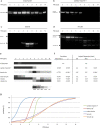A field study to evaluate PMI estimation methods for advanced decomposition stages
- PMID: 32248308
- PMCID: PMC7295721
- DOI: 10.1007/s00414-020-02278-0
A field study to evaluate PMI estimation methods for advanced decomposition stages
Abstract
Estimating the postmortem interval (PMI) is one of the major tasks and a continuous challenge in forensic pathology. It is often an exclusion process of available methods, which ultimately can lead to an unsatisfactory outcome due to poor reliability. This problem is most acute in the late PMI, when decomposition proceeds and some methods (such as rigor, livor, and algor mortis) are no longer applicable. Several methods, such as forensic entomology, skeletal muscle protein degradation, and the study of body decomposition by application of a morphological scoring, are expected to provide further information; however, all have certain limitations and weaknesses. Availability of a tool-box of methods allows a case-specific selection of the most appropriate one(s), or eventually provides improvements in the overall accuracy and precision of the PMI estimation by merging and combining methods. To investigate practical (field) application, eventual interferences, and/or synergetic effects, as well as the robustness of these methods towards specific influencing factors, a field study was conducted, using eight pig cadavers of different body weights and physical coverage, left to decompose under natural conditions for 16 days. Morphological changes during decomposition were assessed using the total body score (TBS), muscle samples were collected to analyze protein degradation, and insect colonization was evaluated. The results reveal strengths and current limitations of all tested methods, as well as promising synergistic effects, and thus, provide a baseline for targeted future research.
Keywords: Entomology; Field study; Morphology; PMI estimation; Protein degradation; Total body score.
Conflict of interest statement
The authors declare that they have no conflict of interest.
Figures






References
-
- Nelson E (2000) Estimation of short-term postmortem interval utilizing core body temperature: a new algorithm. https://www.ncbi.nlm.nih.gov/pubmed/10759069. Accessed 15 Nov 2019 - PubMed
-
- Cordeiro C, Ordóñez-Mayán L, Lendoiro E, Febrero-Bande M, Vieira DN, Muñoz-Barús JI. A reliable method for estimating the postmortem interval from the biochemistry of the vitreous humor, temperature and body weight. Forensic Sci Int. 2019;295:157–168. doi: 10.1016/j.forsciint.2018.12.007. - DOI - PubMed
MeSH terms
Grants and funding
LinkOut - more resources
Full Text Sources

